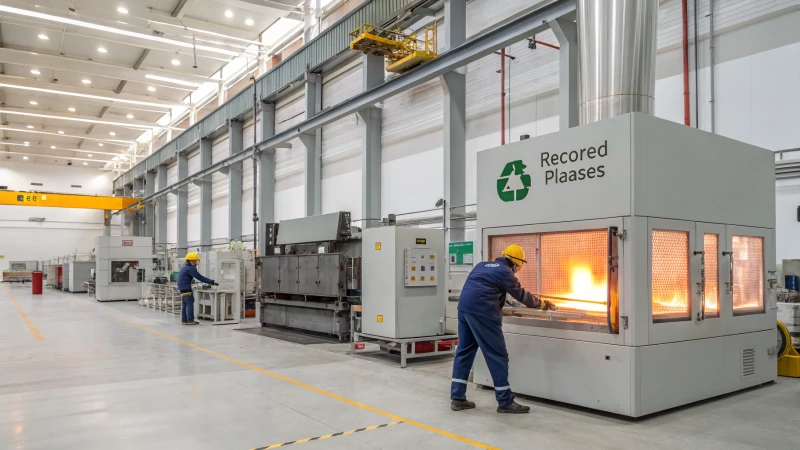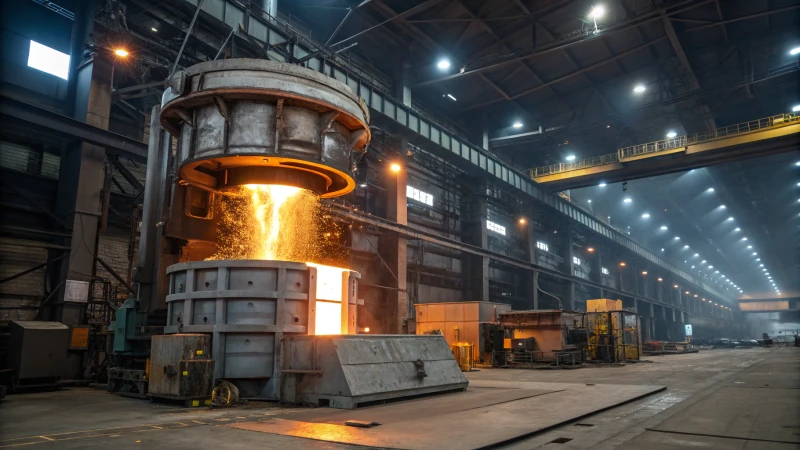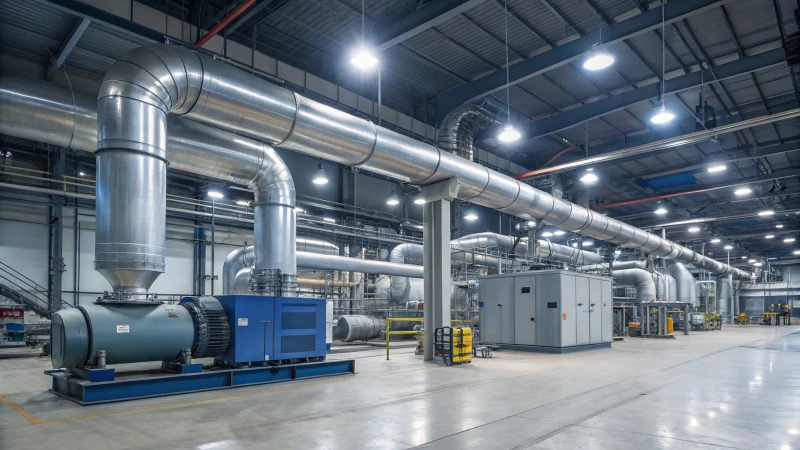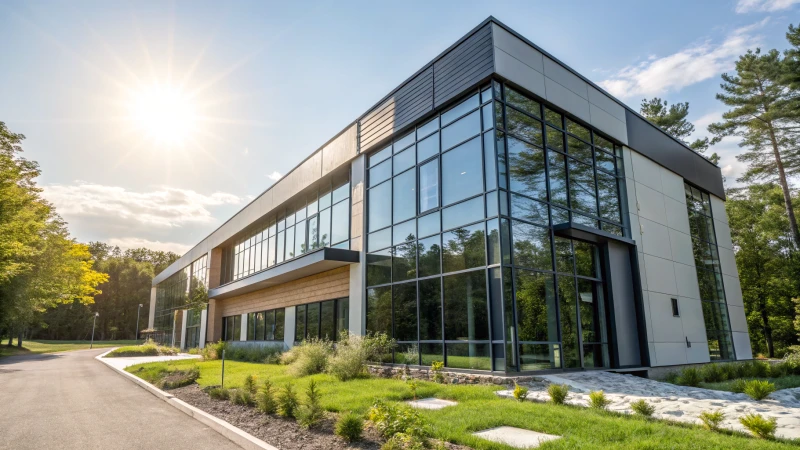
Ever wondered how the glimmering glass bottles on your vanity are becoming more eco-friendly?
Energy-saving technologies in cosmetic glass bottle production include electric melting furnaces, heat recovery systems, advanced insulation, efficient molding techniques, recycled glass use, and automation. These innovations can reduce energy consumption by up to 30%, offering a significant environmental and cost advantage.
When I first delved into the world of glass packaging, I was amazed by how much energy goes into each elegant bottle. But the industry is evolving. Technologies like electric melting furnaces and heat recovery systems have been game-changers. They remind me of a time I visited a factory where a simple switch to recycled glass cut their energy bill significantly. It was a revelation to see sustainability in action. Let’s explore these technologies further and understand how they’re shaping the future of glass production.
Electric melting furnaces reduce energy use by 30%.Vrai
Electric melting furnaces are more efficient, cutting energy use by up to 30%.
Recycled glass increases production costs significantly.Faux
Using recycled glass lowers material costs and energy consumption in production.
How do Electric Melting Furnaces Improve Efficiency?
I remember the first time I stumbled upon electric melting furnaces; it was like uncovering a secret to a more efficient and sustainable world. So, how exactly do these modern marvels transform industries?
Electric melting furnaces improve efficiency by slashing energy consumption, offering precise temperature control, and minimizing emissions compared to traditional gas furnaces, which results in cost savings and environmental benefits.

Precise Temperature Control
Electric melting furnaces allow for precise temperature management1, crucial in industries like glass production. I can’t stress enough how incredible it feels to have absolute control over the temperature in production. This precision minimizes energy waste and ensures optimal melting conditions, making everything run smoother and more efficiently.
Reduced Energy Consumption
A major advantage of electric furnaces is their ability to lower energy usage. By utilizing electricity rather than fossil fuels, these furnaces can achieve up to 20% energy savings. The first time I compared energy bills after switching to electric furnaces, I was amazed.
| Furnace Type | Energy Consumption |
|---|---|
| Gas Furnace | High |
| Electric Furnace | Reduced by 10-20% |
It’s not just about savings—it’s about aligning with a future where every watt counts. Seeing the figures drop month after month is a satisfying testament to this efficiency.
Environmental Benefits
By reducing reliance on fossil fuels, electric furnaces significantly cut down on emissions. Shifting to electric furnaces felt like a breath of fresh air—literally. This makes them an attractive option in regions with strict environmental regulations, such as Europe. The reduction in emissions contributes to sustainable manufacturing2. For me, it’s not just about compliance; it’s about knowing I’m contributing to a more sustainable planet.
Improved Safety and Maintenance
Electric furnaces eliminate risks associated with gas leaks, leading to safer operations. In terms of safety, the absence of gas leaks with electric furnaces is a huge relief. Additionally, they often require less maintenance due to fewer moving parts compared to traditional systems, enhancing overall operational efficiency and allowing me to focus on enhancing efficiency rather than constant repairs.
Integration with Advanced Technologies
Electric furnaces can be integrated with smart technologies, such as AI-driven systems, to optimize processes. I remember being skeptical at first about integrating smart technologies with electric furnaces. But when I saw the difference AI-driven systems made in optimizing processes and managing energy consumption, I was sold.
For example, smart energy management systems3 can lead to significant operational improvements by ensuring that energy consumption is monitored and managed efficiently, further boosting productivity.
This combination of factors makes electric melting furnaces my go-to choice for anyone looking to improve efficiency while staying committed to environmental standards.
Electric furnaces save up to 20% energy compared to gas furnaces.Vrai
Electric furnaces are more efficient, reducing energy use by 10-20%.
Gas furnaces have lower emissions than electric furnaces.Faux
Electric furnaces reduce emissions by not relying on fossil fuels.
How Do Heat Recovery Systems Enhance Energy Efficiency?
Imagine capturing heat that’s usually wasted and turning it into something useful!
Heat recovery systems capture and reuse waste heat, cutting energy use by up to 30%. They enhance efficiency and support sustainable operations in industries like glass manufacturing and HVAC systems.

The Mechanics of Heat Recovery
I remember the first time I walked into a glass manufacturing plant, mesmerized by the sheer intensity of the heat and the roaring furnaces. It struck me how much energy seemed to evaporate into thin air. That’s when I learned about heat recovery systems. These brilliant systems capture that excess heat—energy that would otherwise be wasted—and turn it into usable power. Imagine having a perpetual energy source that reduces your reliance on external power. It’s like having your cake and eating it too!
Key Components:
- Heat Exchangers: Think of these as the middlemen, efficiently transferring heat from one medium to another.
- Recovery Units: These are the heroes capturing and storing all that excess heat.
- Distribution Systems: They ensure the recovered heat is wisely utilized, like pre-heating air or water, minimizing the need for additional energy sources.
Applications in Industry
In my years of exploring various industries, I’ve seen how glass manufacturers, in particular, have embraced these systems. The high temperatures needed for glass production often lead to substantial heat loss. However, innovative heat recovery methods4 have made it possible to reclaim this energy, offering significant savings and boosting sustainability.
| L'industrie | Application Example |
|---|---|
| Glass Manufacturing | Pre-heating raw materials |
| HVAC Systems | Reheating ventilation air |
Environmental Impact
Reducing our carbon footprint has always been a personal mission of mine. Heat recovery systems play a critical role here by decreasing fuel consumption, thereby lowering greenhouse gas emissions. This isn’t just about saving money—though companies report up to 30% reductions in energy costs—but about contributing to a healthier planet for future generations.
Economic Benefits
There’s no denying the financial upside. When I implemented these systems in my own operations, the economic savings were immediate and substantial. Plus, with incentives and subsidies available for adopting such energy-saving technologies, it’s an investment that pays for itself over time.
Table: Cost-Benefit Analysis
| Benefit | Potential Savings |
|---|---|
| Energy Costs | 20-30% Reduction |
| Operational Efficiency | Enhanced by up to 15% |
Challenges and Considerations
Of course, it’s not all sunshine and rainbows. The initial costs and maintenance requirements can be daunting. But with each technological advancement, these systems become more accessible and easier to integrate. If you’re considering this path, I highly recommend checking out case studies5 from companies who have successfully walked this road. Their experiences offer invaluable insights into overcoming hurdles and maximizing benefits.
Heat exchangers transfer heat between two mediums.Vrai
Heat exchangers are essential components that facilitate the transfer of heat.
Heat recovery systems increase energy costs by 30%.Faux
Heat recovery systems actually reduce energy costs by up to 30%.
How Do Advanced Insulation Materials Affect Energy Usage?
Have you ever wondered how the right insulation can transform not just your energy bills but your entire living environment?
Advanced insulation materials drastically cut energy costs by improving thermal performance and reducing heat transfer, making them a cornerstone of sustainable building design.

The Science Behind Insulation Efficiency
I remember the first time I realized just how crucial insulation was. It was one of those bone-chilling winters where even layers of blankets couldn’t fend off the cold seeping in through the walls. That’s when I delved into understanding how insulation works. Essentially, it slows down heat transfer, maintaining a cozy indoor climate irrespective of the outside temperature. Advanced materials like aerogels and vacuum insulated panels? They’re like the superheroes of insulation, offering superior thermal resistance.
| Matériau | Thermal Resistance | Durability |
|---|---|---|
| Fiberglass | Moderate | High |
| Aerogels | High | Moderate |
| Vacuum Insulated Panels | Very High | Moderate |
These advanced materials create a barrier against the elements, making heating and cooling more efficient.
Benefits of Advanced Insulation Materials
-
Energy Savings
I’ve seen homes reduce their energy bills by nearly half after installing these advanced materials. Imagine what you could do with those savings! -
Sustainability
By slashing energy demand, these materials are a win for the planet too, helping reduce carbon footprints and aligning with eco-friendly standards like LEED certification6. -
Improved Comfort
A stable indoor climate means more comfort and less fiddling with thermostats, which is something we can all appreciate.
Future Trends in Insulation Technologies
As we push for sustainability, innovations like biodegradable and recycled insulation materials7 are gaining traction. I’ve been keeping an eye on how nanotechnology is promising to enhance thermal resistance without bulking up materials.
- Emerging Technologies: Smart insulations that adapt to temperature changes are particularly exciting.
- Adoption Challenges: While the initial cost can be steep, as demand increases, we expect prices to drop.
These advancements are about more than just cutting costs—they’re paving the way for a greener future in construction. With this knowledge, we can make informed choices, whether we’re building anew or retrofitting our existing spaces.
Aerogels offer higher thermal resistance than fiberglass.Vrai
Aerogels have superior thermal resistance compared to fiberglass.
Advanced insulation materials can cut energy use by 10%.Faux
Advanced materials can reduce energy consumption by 30-50%.
What Are the Benefits of Using Recycled Glass in Production?
Let me share with you how recycled glass is transforming manufacturing with benefits that go beyond just environmental gains.
Recycled glass, or cullet, offers significant advantages in production. It cuts energy consumption, reduces costs, and lowers carbon emissions. Since cullet melts at a lower temperature than raw materials, it serves as a more efficient and eco-friendly alternative for manufacturers.

Lower Energy Consumption
When I first stumbled upon the concept of using recycled glass in manufacturing, I was amazed at its potential to save energy. Imagine being able to melt glass at a significantly lower temperature than usual! That’s precisely what happens with cullet8, allowing manufacturers to shave off 2-3% of energy use by incorporating 10-20% cullet. And guess what? If you up the ante to about 50%, the savings can soar up to 10%.
| Percentage of Cullet | Energy Savings |
|---|---|
| 10-20% | 2-3% |
| Up to 50% | Up to 10% |
Cost-Effective Production
I remember my early days in the industry when every penny saved felt like a major victory. Incorporating recycled glass into production processes does just that—it slashes costs. By reducing the need for new raw materials and cutting down on energy expenses, manufacturers can see substantial savings associated with material procurement9.
Environmental Impact Reduction
The realization that using cullet could actually help shrink my carbon footprint was a game-changer. It’s not just about saving money—it’s about making a meaningful contribution to sustainability. Less reliance on raw material extraction means we’re stepping up in reducing our environmental impact and contributing to sustainability efforts10.
Enhanced Manufacturing Efficiency
It’s incredible how recycled glass can streamline operations. Lower melting points translate into more efficient furnaces and faster production cycles. This means not only increased output but also a smoother process that benefits both manufacturers and the end consumer11.
Recycled glass reduces energy use by 5-10% at 50% cullet.Vrai
Using 50% cullet in production achieves 5-10% energy savings.
Cullet increases carbon emissions during production.Faux
Cullet actually reduces carbon emissions by lowering energy needs.
Conclusion
Energy-saving technologies in cosmetic glass bottle production include electric furnaces, heat recovery systems, advanced insulation, and recycled glass use, reducing energy consumption by up to 30%.
-
Understanding how electric furnaces achieve precise temperature control is key to optimizing industrial processes and improving product quality. ↩
-
Exploring sustainable practices can guide businesses in reducing their environmental impact while maintaining efficiency. ↩
-
Discovering how smart systems enhance furnace operations can lead to better energy efficiency and reduced costs. ↩
-
Discover how innovative methods capture waste heat in glass production to reduce energy consumption. ↩
-
Explore real-world examples showcasing the effectiveness and cost savings of heat recovery systems. ↩
-
Learn about LEED certification and how it promotes environmentally responsible building practices. ↩
-
Understand the benefits of using recycled materials in insulation to enhance sustainability and energy efficiency. ↩
-
Learn how cullet’s lower melting point leads to significant energy savings, making it a sustainable choice for manufacturers. ↩
-
Explore how reducing the need for new raw materials can cut production costs. ↩
-
Discover how recycled glass contributes to sustainability by lowering carbon emissions. ↩
-
Understand how using cullet can enhance manufacturing processes and output efficiency. ↩



